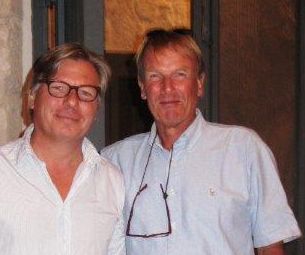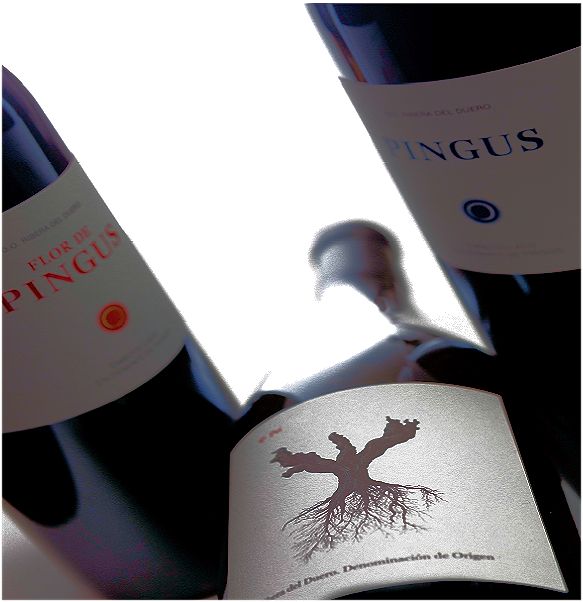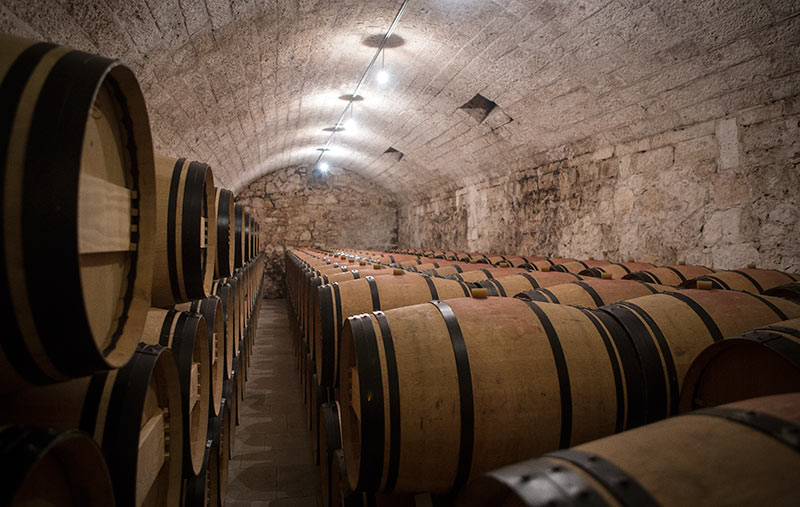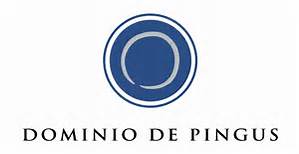Dominio de Pingus
GESCHIEDENIS VAN HET WIJNHUIS DOMINIO DE PINGUS

De Deen Peter Sisseck behoort sinds 1995 tot de meest succesvolle wijnmakers van Spanje. Begin jaren '90 vestigde hij zich in Spanje, waar hij in 1992 als wijnmaker begon bij het nieuwe wijngoed 'Hacienda Monasterio' in Ribera del Duero. Dit wijngoed ontwikkelde zich vooral door de overtuigende inzet van Peter Sisseck tot één van de beste in de regio. Naast zijn werk bij Hacienda Monasterio startte hij zijn eigen wijngoed 'Dominio de Pingus'. De naam van het domein en van de wijn Pingus was zijn bijnaam in Denemarken.
Mede dankzij een hoge waardering door Robert Parker werd Peter met zijn Pingus uit 1995 de ster van de Spaanse wijnwereld. Sinds die tijd behoren zijn wijnen tot de beste van de wereld. Pingus is een perfecte wijn; geconcentreerd en elegant. Als tweede wijn werd na enkele jaren de 'Flor de Pingus' toegevoegd.
In 2007 startte Peter Sisseck samen met Pablo Rubio een project is samenwerking met lokale wijnboeren, waarbij de druiven afkomstig zijn van een netwerk van regionale Ribera del Duero terroirs (oude percelen), waarbij Dominio de Pingus garant staat voor de kwaliteit van deze wijn.
DRUIVENSOORTEN
Pingus en Flor de Pingus zijn voor vrijwel 100% gemaakt van Tinto Fino (Tempranillo), hoewel op de oudere wijngaarden soms nog enkelen andere druivenvariëteiten mee worden geoogst. Op oude wijngaarden komt het wel vaker voor dat er diverse druivensoorten door elkaar werden verbouwd, zoals dat in Portugal nog weleens het geval is.
Psi bestaat voor meer dan 90% uit Tinto Fino (Tempranillo). De laatste jaren is dit een blend met een gering percentage Garnacha Tinto erbij.
BODEM EN KLIMAAT
Pingus is afkomstig van vier oude wijngaarden die dateren uit 1929. Het gebied bevindt zich 700 tot 850 meter boven de zeespiegel. Het vriest er ‘s winters en soms ook nog in het voorjaar. In de zomer kan temperatuur tot 40ºC oplopen, waarbij 's nachts vaak forse temperatuurdalingen optreden. Door deze klimatologische omstandigheden is het groeiseizoen relatief kort. De zuidelijke ligging op de 40e breedtegraad en bovengenoemde temperatuurvariaties vormen de ideale biotoop voor de productie van grote Ribera del Duero wijnen: "vinos Ribera del Duero". De bodemsamenstelling is een schoolvoorbeeld van de ideale wijngaardgrond: kalk, klei, rivierslib, kwarts en sporenelementen.
Flor de Pingus is afkomstig van 18 verschillende wijngaarden.
Psi is afkomstig uit vier verschillende dorpen (in totaal 417 kleine wijngaarden) met een gemiddelde oogst van 3000 kg/ha.
KLIMAAT
Ondanks de ligging in het Spaanse binnenland, is het klimaat in een mix van continentaal en gematigd-mediterraan: meestal warm en droog met bescheiden neerslag (500 mm) en hete, droge zomers. Dankzij de hoogte is, zelfs hartje zomer, de nachttemperatuur laag, wat bevorderlijk is voor de ontwikkeling van de druiven. De hoogte brengt ook lange, koude winters met zich mee en de vorstvrije periode is slechts 111 tot 138 dagen per jaar, afhankelijk van de ligging.
WIJNEN EN WIJNBEREIDING
Pingus (100% Tinta del Pais (Tempranillo)): de druiven worden met de hand geselecteerd. De wijn rijpt gedurende ongeveer 12 maanden op 2 jaar oud Frans eiken (die het eerste jaar werden gebruikt voor Flor de Pingus).
Flor de Pingus (100% Tinta del Pais (Tempranillo)): De wijn rijpt gedurende ongeveer 18 maanden op nieuw Frans eiken.
Psi: is een blend van ongeveer 90% Tinta del Pais (Tempranillo) en ongeveer 10% Garnacha tinta.
DOMINIO DE PINGUS WIJNEN
The future of Pingus and Flor de Pingus 2014, 2015 & 2016
by Miquel Hudin
Peter Sisseck and his winery, Dominio de Pingus should need little if any introduction to those who know Spanish wines. An enologist by study, he found his way to Ribera del Duero, encountered some fine, old-vine Tempranillo, made it into excellent wine, and the rest is well, history. There are of course many finer points to the story but the real crux of it is that his wine, Pingus, became one of the earliest "cult wines" there was, but this was not at all what Peter was aiming for. He was simply making a good wine and the wine critics (back when scores really meant everything in the mid-1990s) took note of it.
Pingus is a unique wine in Spain as it regularly gets top marks from all the wine critics who review it and is often hitting that exalted score of 100 from the likes of The Wine Advocate's reviewer. Along with this, the wine has readily shot up in price over the years and I seem to recall it's often 800-1,000€ a bottle depending on the vintage. Not a wine for mere mortals which is why when a friend of mine mentioned that he'd be going there and asked if I wanted to tag along on the 5+ hour drive across the middle of Spain, I jumped at the chance.
Peter's winery is lovely. It's exact, modern, and yet housed in a series of interconnected old buildings. It has a very downplayed, non-ridiculous manner of sitting in the village of Quintanilla de Onésimo in the Valladolid Province a bit over an hour to the north of Madrid. If you didn't know it was there, you'd not realize it was a winery. What I was most surprised of was the state-of-the-art lab and the fact that they do analysis for other cellars. I'm so accustomed to most winemaker's having their own little "science cave" that they share with no one and it was a ready reminder that Peter is first and foremost an enologist who has an expert team working for him.
After touring the various parts of the cellar, we went down to the caves (as seen above) to sample the forthcoming vintages from the barrel. The one that was closest to bottling was the 2014 and indeed, it showed this quite easily. Given that this was something of an informal, friendly tasting, I was asked not to score the wines, which I really have no problem with as scoring a wine that hasn't yet been bottled is Crazy Town and of course, I'm saying this just as En Primeur is ramping up in Bordeaux. Regardless, it was a wonderful peek into the future wines from one of Spain's absolute top cellars.
Flor de Pingus 2015
Bright, crisp red cherry, peppery, short but present herbal notes. Very direct and linear. Medium intensity and light on the palate. Definitely a solid, high-quality wine, but something to enjoy sooner rather than later as it seems, like the other side of Spain, the acidity presents itself a bit lower in this vintage.
Flor de Pingus 2016
Fresh with dark cherry notes, quite potent, licorice, taught and sinewy, cigar, bit of forest floor. Already very light and well formed on the palate, delicate with great life, medium acidity, and finish.
Pingus 2014
Cedar, red and dark cherry, crushed herbs, limestone minerality, roasted meat, light and elegant on the palate, wound up very well with excellent, excellent length in the finish. Mint and eucalyptus with medium plus acidity. This is a wine to age and undoubtedly, once scored by the movers and shakers, it will get mighty high points.
Pingus 2015
Dark cherry but light on the nose, tea leaf, light hint of underlying plum, lighter mineral notes, bit of fiery kirsch notes, savory tomato skin. Soft, cocoa dust on the palate, medium finish. Light and fresh overall, showing the 2015 vintage in a similar manner as the Flor de Pingus.
Pingus 2016
Meaty and muscular initially, cigar, touch of green herbs, earthy with a solid foundation, red cherry, cured strawberries. Excellent balance in the mouth, medium acidity, persistent finish with graphite notes. This still has a good more time to age, but like the 2014, is headed in a special direction.
